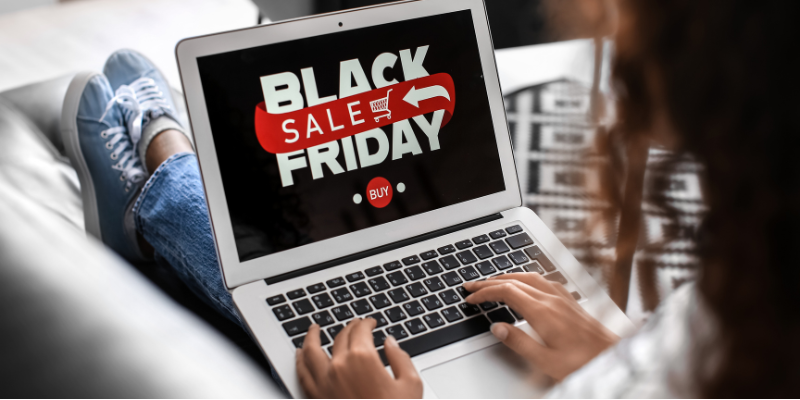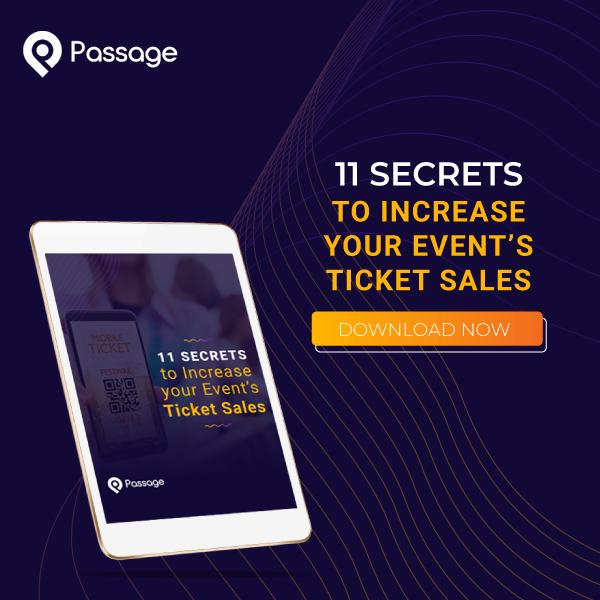Fun is one of the things we’re missing most right now. When you’re ready to reopen your attractions or family entertainment centers (FEC), guests will be excited to return to enjoy fun activities and spend time with their loved ones.
But we’re living in a new normal, and it can be tough to tell what “ready” looks like, even for experienced FEC & attractions owners. We’re here to help you prepare for openings while keeping your guests and staff safe. Read on for our step-by-step guide including:
- Physical Distancing
- Queueing, Contactless Check-ins and Payments, Point of Sale and Engagement
- Virtual Queuing
- Cleaning Protocols
- Temperature screenings
- Guest Communications
- How to handle guests who don’t follow the rules
Do your research
The first thing you should do now to prepare for reopening is to consult with your local government’s health and safety departments about what requirements are needed to consider reopening. The safety of your staff and guests should come first.
The CDC and the White House have released national guidelines, but every state has its own rules and regulations. These can vary by the city or county level as well, so it’s important to make sure that your event adheres to the requirements in your individual location. The U.S. Chamber of Commerce regularly updates a map with links to individual state’s reopening plans as well as some other useful resources.
Planning and Supplies
The federal and state regulations should serve as the minimum standard you set for your own event. Think through the operational elements, infrastructure, and supplies you’ll need to adjust or change to accommodate COVID-19 prevention. Start sourcing supplies like sanitation stations, mass, gloves, and PPE right away: it will take time for those orders to be filled, and you can’t open your doors without them.
Be sure to consider the following issues and include protocols for each in your plan:
- Infrastructure and Supplies
- Physical distancing or space limitations
- Hand-washing or sanitizing stations
- Personal protective equipment for team members
- Operational Elements
- Checking people in
- Signage
- Updating your website
- Revised hours, attraction availability, and policy changes
- Health screenings for visitors and staff
- Training for new and current team members
- Communicating with guests
One of the most common pieces of feedback we’re hearing from our clients is a confusion about the “rules”. Guests are uncertain whether they need to wear a mask, how to queue up when they arrive, or what preparations they may need to complete in advance of visiting your facility. The fact that every state (and even many cities) has its own set of regulations doesn’t help.
Take every opportunity to remind guests of your protocols, including physical distancing, so they can be prepared and feel comfortable enjoying their day at your attractions as they planned.
Space Limitations
For the foreseeable future, most businesses will need to require or at least encourage social distancing measures, meaning guests must stay at least six feet away from others who are not in their immediate household.
Some states require businesses to limit the total number of patrons inside at one time, determined by the total square footage of your space.
Reducing the total number of guests at your facility will help, but that’s just the first step. Think about areas where guests typically congregate. Queues or waiting areas are obvious targets. Consider whether you’ll need to add additional queue line space or add physical barriers or floor marketings to help guests social distance.
Queueing, Contactless Check-ins and Payments, Point of Sale and Engagement
Did you know? Your Passage account can help you control the crowd flow at your attractions. Here are some strategies you can use to make it easier for your guests and on yourself.
Pre-Arrival
Consider giving guests the option to reserve a spot at your FEC or attractions prior to their arrival, or at least allow them to pre-pay for their admission online. This will help eliminate contact with your staff upon arrival — there will be no exchange of money — and will help you control the crowd flow and plan staffing schedules.
When a guest books admission to your attraction, as soon as their booking is confirmed, send an email with information about what to expect during their visit and include a link back to your web page with this information. Send a reminder email the day before or the day of their scheduled visit, and include this information again. It might seem like overkill, but remember that your guests have busy lives (just like you do!) and they may need a few reminders.
If you’re using Passage, we’ll do this automatically for you.
No-contact Scanning
If you’re using Passage as your ticketing partner, you can scan guests with zero contact. No paper tickets. No touching. Here’s how:
- Ask guests to display their ticket code on their mobile device.
- Hold your device over theirs and tap the viewfinder, which will display a green checkmark to let you know the ticket is valid.
- Remember you can also look guests up by name using our Guest List mode, and check them in by toggling the button next to their name in the app. This can be useful if you have a physical barrier set up between staff and guests that prevents you from scanning a ticket.
Timed Ticketing
Timed ticketing can help you control the crowd flow at your facility by limiting the number of guests who enter during a given time period (we recommend one-hour time slots but you can customize them however you like!). You set the time slots and a maximum number of guests per slot. This will allow you to keep that line flowing much more quickly, to forecast the number of attendees before the event, and to potentially charge a higher price for tickets that get through the line more quickly.
Assigned Seating and Party Bookings
It’s not just for sports arenas or theaters. If your venue includes an open seating area or even outdoor picnic benches, allowing guests to select their seats in advance can help ensure they maintain physical distancing even while relaxing at your FEC. Assigned seating is customizable for your specific layout, so you can easily block off areas or sections of seating to keep unfamiliar guests separated. You could also use this for party bookings, especially if you offer multiple party rooms or allow guests to reserve dedicated areas of your FEC such as an arcade, bowling lanes, or go-kart track.
Virtual Queuing
This summer, Passage is launching a virtual queuing feature on our platform which will give you even more power to manage your crowds and wait times, and allow guests to queue up safely.
When guests arrive at your facility, you’ll check them in by scanning their tickets as you normally would. Redeemed tickets will automatically be added to your virtual queue, and guests will be alerted via email or SMS text when it’s their turn to experience your FEC or one of your attractions. As the owner, you’ll be able to set the capacity, which controls how many guests are called up at a time.
Guests can wait in their vehicles to enter, or if they are queuing up for individual attractions, you could allow them to visit your concessions, an outdoor picnic area, or another open space where they can safely distance themselves from unfamiliar guests.
Combined with timed ticketing, virtual queuing will be a powerful tool for you to maintain social distancing at your attractions while bringing in as much revenue as possible.
Cleaning Protocols
Everyone is re-doubling their cleaning efforts these days. We’re washing our hands like we’re scrubbing in for surgery. We carry hand sanitizer with us at all times.
Your guests will expect you to be extra diligent when it comes to cleaning and sanitizing your event location, too. Research your local requirements, and establish a cleaning plan that your staff can stick to throughout your event. This might include wiping down high-touch surfaces at regular intervals, sanitizing certain equipment in between each guest, and requiring staff to wear gloves and/or facial coverings in addition to regular handwashing. Some events are investing in hand-washing stations or touch-free sanitizer dispensers in key locations for guest use.
We recomend reviewing the CDC’s guidelines for cleaning and disinfecting practices. The general framework they suggest implementing includes:
- Normal routine cleaning with soap and water will decrease how much of the virus is on surfaces and objects, which reduces the risk of exposure.
- Disinfection using EPA-approved disinfectants against COVID-19 external iconcan also help reduce the risk. Frequent disinfection of surfaces and objects touched by multiple people is important.
- When EPA-approved disinfectantsexternal icon are not available, alternative disinfectants can be used (for example, 1/3 cup of bleach added to 1 gallon of water, or 70% alcohol solutions). Do not mix bleach or other cleaning and disinfection products together. This can cause fumes that may be very dangerous to breathe in. Bleach solutions will be effective for disinfection up to 24 hours. Keep all disinfectants out of the reach of children. Read EPA’s infographic on how to use these disinfectant productsexternal icon safely and effectively.
Maybe you already do some (or all) of those things. That’s great! Be sure to let your guests know what precautions you’re taking to help them – and your team – prevent the spread of germs.
If your event provides concessions, take into consideration which items could be potential hotspots for a virus to spread. You may decide it’s safer to switch to disposable menus and cutlery, or remove shared condiment stations, for example.
Screening employees and guests
Your state may already require some kind of screening, such as temperature checks or verbal confirmation of symptoms, prior to an employee’s daily shifts. Depending on your situation, screening team members and volunteer staff may be sufficient, or you may want to consider screening your guests as well. This may be controversial in some areas, but remember that the health and safety of your staff and guests is the highest priority.
Do you need to invest in temperature scans?
Fever is one of the telltale symptoms of COVID-19, so a temperature scan may help flag individuals who might have the illness before they enter your event. It won’t identify asymptomatic cases, but refusing entry to those with a high temperature can help prevent the spread of disease at your event and reassure guests that it is safe to visit.
Handheld infrared spot thermometers are one of the noninvasive tools available to quickly and efficiently scan guests at the entrance (FDA-approved models retail for about $150). These need to be held a few inches from each guest’s forehead, so they do require your staff to be in close proximity to guests. Face coverings or personal protective equipment can help mitigate those risks if you choose to implement temperature scans.
Ultimately, the decision of whether or not to scan guest or employee temperatures is yours to make. Be sure to consult your local regulations to determine what is acceptable in your area, and you could even send out a survey to guests who have attended your event in the past to gauge how they would respond to a noninvasive scan prior to entry.
What happens if a guest fails the screening?
If you decide you need to refuse entry to a guest for health & safety reasons, remember to do so with caution and compassion. Give your team extra training on how to handle these challenging situations. Update your refund policy to include contingencies for guests who are turned away because they have a fever or visible symptoms. Alternatives to a refund can include:
- Allowing guests to reschedule their visit for a later date.
- Giving guests a credit to use on a future event ticket.
- Allowing guests to transfer their ticket to a friend.
Make sure you’re providing guests with information well in advance so they know what to expect, and send reminders in the days leading up to your event to help them prepare. Simple, friendly signs help guests meet your expectations and keep everyone safe.
Dress Rehearsal
When you’re ready, host a dress rehearsal or soft opening with your staff and their families. Allow them to visit your FEC as your guests would so you can work out any kinks before you open to the public. Test out your messaging. If your staff is confused about the rules, your guests will be, too. When paying guests arrive, your team will be prepared to communicate with them effectively and guests will have a smoother visit.
Start communicating with guests now
Your guests will return when they feel comfortable, not just because things have reopened. As event professionals, it’s our job to help them feel safe and at-ease. This starts with communication: keep your guests informed on your reopening plans and what they can expect when they visit your event. Are you implementing employee health screenings? Doing extra cleaning? Your efforts only count if guests know about them so they feel comfortable doing business with you.
You should also include your expectations for guests: How should they queue up when they arrive? Will they be required to wear masks? Let them know in advance, so they have time to mentally prepare and secure any supplies they might need before the event.
These communications don’t have to be a boring list of rules; it’s an opportunity for you to re-energize your fans and build faith that your event is a safe place to enjoy.
Make your website home base for information
Communicate your new procedures in as many places as you possibly can, but make your website home base for all the details. Place information about reopening prominently on your homepage, or display a popup when guests land on your site. You could even link to a dedicated page within your website that has all the details guests need to know. If you have multiple attractions within your facility, you may want to set up separate pages with the requirements for each attraction if they vary. Sanitizing requirements will be different for indoor and outdoor facilities, for example, with indoor requirements being more strict.
Share the information on other channels such as social media. Blast a message or two to your email list. The more informed guests feel, the more comfortable they will be attending your event.
Put a positive spin on the message
Social distancing might not be possible at some of your attractions, and you may decide to reopen with limited attraction availability. Promote what IS open at your FEC versus what isn’t. Show guests what they can enjoy when you reopen, rather than focusing on what they might be missing out on.
Create reminders throughout your facility
Don’t forget about on-site communications. Consider adding some physical signage to your location, so guests who may have missed (or just forgotten about) your new procedures can be informed when they arrive. Include your operating hours, social distancing and sanitizing requirements, and attraction availability to reinforce information for guests and help their visit go smoothly.
How to handle guests who don’t follow the rules
The more you can communicate the new procedures with guests, the more comfortable guests will be with the “new normal”. However, there may still be some guests who don’t want to follow the rules, or who forget. Sometimes when we’re having fun, we forget to maintain physical distancing.
How do you handle those situations?
The skills for enforcing these policies are the same as the ones you use to keep guests in organized lines while they wait for attractions, or not to bump into each other on a go-kart track, for example. You can translate those same skills to train your team to enforce social distancing as well. It’s a good opportunity to re-train your staff on all health & safety protocols. Find the right balance between over-enforcing: you still want guests to have fun, and there will inevitably be some minor errors as we all adjust to the new rules.
Need help setting up timed ticketing, assigned seating, or other features for your FEC? Set up an onboarding call with our support team. We’re here for you!












